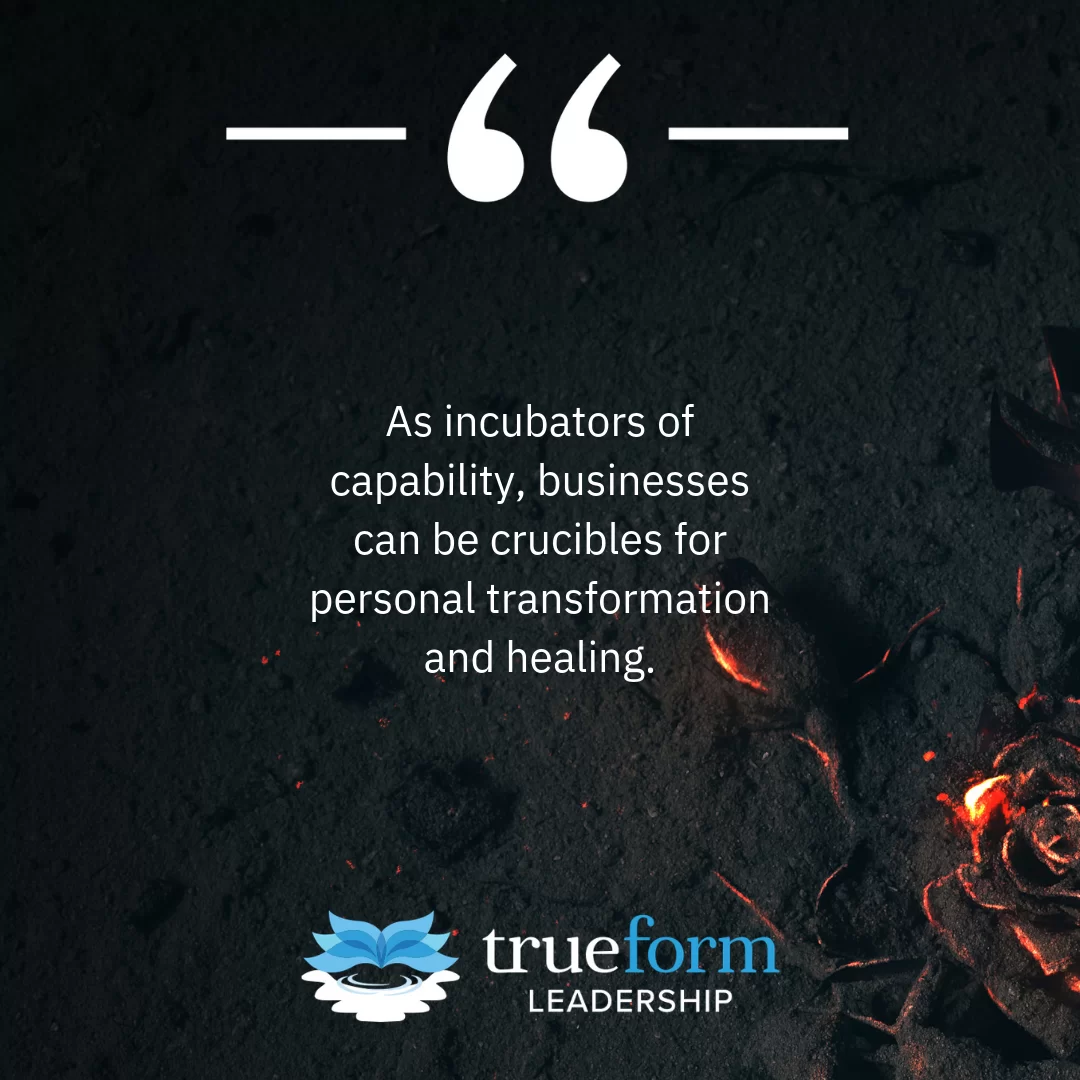Incubators of Capability
While I’m often asked by business owners what systems, technology, or processes can be layered in to resolve their growth challenges – the most valuable cogs in a sustainable infrastructure can’t be bought. And that’s the people. The most effective leaders surrender into this truth and get sharply focused on developing their teams to ensure they can meet the ever-changing context of the work that needs to be done.
People come to you rarely formed with all the talents, skills, and capabilities needed. And even if they did, if you’re running a growing company the demands will shift over time and your employees will need to shift to meet them. While we often focus on the technical training needed to reach goals, sometimes the development called for is more personal – not at the head, but at the heart level.
Your job as a leader is to get really good at forecasting and identifying pressure points and working with your team to meet and master challenges, in whatever form, as your business grows. A client recently lamented to me, “Growing your business is hard, growing your culture is much harder.” This is true… and culture is about meeting people at the heart level.
Developing your business as an “incubator of capability”, as Robert Kegan and Lisa Lahey have described, involves “hardwiring development into your bottom line so that, along with asking whether your culture is fostering the other elements of business success (such as profitability or the consistent quality of your offering), you ask – demand – that your culture as a whole, visibly and in the regular, daily operations of the company, be a continuous force on behalf of people overcoming their limitations and blind spots and improving their mastery of increasingly challenging work.”
As incubators of capability, businesses can be crucibles for personal transformation and healing. I hear it from my clients – the triggers they are struggling with as leaders in their businesses are similar triggers that seize them at home. Similar triggers that have seized them most of their lives.
What is true for you is also true of your employees. Their limitations and blind spots are also standing in their way. They fuel responses such as: “This can’t be done.” “There’s not enough time.” “I have more important things to do.” Limitations and blind spots show up as personality clashes, finger pointing, and backstabbing which all erode trust and, eventually, results.
Business growth brings change and change often evokes stress. How we manage our stresses, fears, and anxieties follows us… inviting limiting beliefs systems, disengagement, and dysfunction into your workplace dynamics. All this “heart stuff” has the potential of derailing your business.
Learning about your own reactive leadership tendencies, and how to evolve out of them, is a first step in bringing more creative and effective leadership into your organization. Leveraging this awareness to build a culture that can name and address these challenges throughout the organization can help to ensure that when your revenue engine is fully engaged you’ll have a healthy and equally engaged team to support it.
~
Leadership Development Practices to help you engage with these concepts in your own leadership development journey:
Naming Reactive Energies: This week when tensions bubble between players, pay attention to the strength and weaknesses of the team members involved. Consider where recent shifts may be pushing them against the edges of their limitations and blind spots. How might reactive energies be fueling the dynamics of the situation?


